Main navigation
Success Stories
Cordlife is proud to help these families in using their cord blood/cord lining/ tissues units stored in various Cordlife facilities for successful stem cell transplantation.
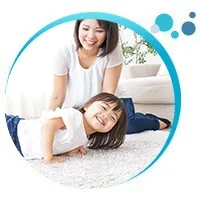
Joyce
Joyce's parents were over the moon when they welcomed their baby girl into the world. They watched her grow, smiling at each new milestone she reached. However, when Joyce was just seven months old, their world came crashing down when she was diagnosed with hypoxic-ischemic encephalopathy.
Joyce had heart surgery to treat an underlying heart problem when she was six months old. The surgery caused oxygen deprivation in her brain, resulting in its shrinkage by 3%. She was unresponsive to external stimuli and had limited consciousness. Her parents were heartbroken that she had to deal with such a condition at such a young age, but they never gave up hope, even when doctors and specialists told them that her condition was incurable.
They searched for possible cures online and stumbled upon research papers and clinical trials that showed how cord blood infusion could help. They remembered that they had stored Joyce's cord blood with Cordlife Hong Kong when she was born and immediately reached out to Cordlife.
After receiving the request from Joyce's parents, the team at Cordlife Hong Kong immediately got in touch with the medical team, which decided to perform the cord blood infusion at the Hong Kong Children's Hospital. The procedure went smoothly, and Joyce did not feel any pain or have any negative side effects. The doctors gave Joyce a good prognosis, and she started to show signs of improvement soon after the infusion.
Joyce's vision improved, and she could now follow the source of light. Even though she still requires tube feeding, her ability to swallow has improved, and she can now swallow her own saliva. She also has more varied and frequent hand and foot movements, and her mental state improved significantly. Thanks to Cordlife's Transplant Care, which is an insurance benefit in the cord blood banking service agreement, the insurance payout helped ease her parents' financial burden, allowing them to focus more on Joyce's recovery.
Joyce has since been discharged from the hospital, and her parents believe that if financial resources allow, all parents should store their baby's precious cord blood. Cord blood can potentially be used to treat more than 80 diseases, such as blood cancers, blood disorders, and genetic diseases. If a child's cord blood was saved, it could be used to treat him/her and his/her family in the event of a health crisis.
Jayant Chabra
Jaisheel and Archana Chabra, a couple from Meerut, were living a happy life with their daughter like any other family. On the 29th of October, 2016, the family was blessed with a baby boy named Jayant Chabra. Jayant's cord blood was preserved with Cordlife at the moment of delivery. And everything went according to plan. With God’s grace, their family picture has been completed with the arrival of their younger son. The child appeared to be completely normal.
However, the problem began four months after Jayant's birth, when the parents observed that their son was having some challenges that appeared to be significant, and they immediately sought medical advice. The doctor suggested certain tests, and when the results came out, he advised them to get some more blood tests done. The family's entire world was turned upside down when the blood test reports arrived.
The reports suggested that Jayant was suffering from Thalassaemia Major which is a genetic disorderthat occurs due to thedestruction of the red cells of the blood.
The couple had heard of the disorder but had no clue that how come this disorder being detected in their kid and how do they deal with it now. Further tests had been done as per the recommendation of their doctor and the results confirmed that the baby was suffering from Major Thalassaemia at the age of 5 months.
Because they had previously saved their Baby's cord blood unit with Cordlife, they were on their way to find a means to find a cure to the disorder the child was experiencing.During pregnancy with Jayant, his parents contacted Cordlife and had a brief discussion for 4-5 months about the services and benefits of Cord Blood banking and how it could be a life saver in the future if the need arose. They went on to preserve his cord blood with Cordlife.When the child was diagnosed with Thalassaemia, it was time for his parents to return to Cordlife, where his Cord Blood stem cells were stored.The father wrote to Cordlife to explain the dilemma they are in and to seek a solution. Cordlife assured him that they are there for the family and will assist them in any manner possible in accordance with the agreement for the child's treatment. In case of requirement Cordlife will procure the stem cells too by using its best endeavours from the public the bank in case the need arises for the transplantation.
At the time of transplantation Cordlife had sourced the matched stem cell unit for the kid from public repository. The cost of the treatment was very high till 40-45 lakhs. In which Cordlife helped them with that too. Cordlife had provided the client with the financial assistance from the insurance provider as promised.
The transplantation has been successful and the child recovering well.. After 5 years they were relieved and now their kid is living a healthy life.
Cordlife not only promised, but actually followed through on the words it did include in the agreement.As the mother of the kid rightly said - no one has seen the future. But in case the future puts your family in such a challenging situation, you need to have a weapon to deal with it and save your families future. This is an eye opener for all expectant parent and will help them to make the right decision of preserving their baby’s cord blood at the time of birth with Cordlife. So that in near future, god forbids, if any family face such adverse situation, Cordlife will support and help the family using the best possible endeavours as promised.

Eugene
Eugene (not his real name) was diagnosed with leukaemia and doctors had given him only 10 per cent chance of recovery, unless he undergoes a bone marrow transplant. However, neither of his parents are a match and as an only child, he had a one in 20,000 chance of finding a non-related donor.
“We came across articles on how cord blood stem cells had been used to treat various blood-related disorders, including leukaemia,” said Eugene’s parents. “Cord blood stem cells also had a higher chance of successful matching as compared to bone marrow. We decided to conceive a second child and use the cord blood to save our son.”
In mid-2002, Eugene’s mother was found to be pregnant with a second child and they decided to store their baby’s precious cord blood with Cordlife. The baby’s cord blood was found to be a 100 per cent match for Eugene, which meant that not only could the cord blood be used, the transplant would also have a higher chance of success. The healthy cells from his sibling repopulated in his bone marrow and revived his immune system, that was previously depleted by the chemotherapy and radiotherapy used to treat the leukaemia.
“Eugene is doing very well now at home. He just started school and is enjoying every minute of it. We still need to be careful and make sure he does not tire himself out, but this is nothing compared to those dark days when he was really sick. The decision to collect his sister’s cord blood was the right one.” said Eugene’s mother.
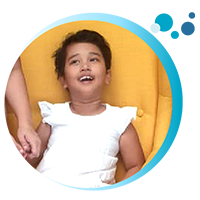
Harumi
“We refused to give up,” said Mr. Hasan and Mrs. Dwi Aprilia as they recalled the time when they found out that their daughter Harumi has cerebral palsy. This proclamation was the source of strength that kept this couple fighting on to nurse their baby back to health.
Nothing unusual happened during Harumi’s birth. Everything seemed fine. Yet, at only a few days old, the little baby experienced her first seizure. The first month of Harumi’s life was the hardest because her parents could not figure out what was happening to their baby daughter. She was only finally diagnosed with cerebral palsy after the family consulted several doctors. Harumi's parents had few options then. Someone told them to accept the reality but they insisted on not giving up and continued to tirelessly search for possible solutions to help their daughter.
When Harumi was born, her parents donated her umbilical cord to a laboratory owned by a friend. Under the advice of this friend, Harumi underwent her first stem cell therapy with stem cells obtained from her own umbilical cord. She was almost three months old at the time. After the therapy, Harumi's condition improved and she had lesser seizure episodes, which stopped eventually.
As Harumi's umbilical cord was not stored under optimal conditions, she only had enough stem cells for one infusion. While Mr. Hasan and Mrs. Dwi continued to search for other viable options, they put Harumi on regular physiotherapy to help develop her sensory and motor functions.
Five months later, a blessing came knocking on the family's door when Mrs. Dwi became pregnant with their second child. Encouraged by the positive result from using Harumi's umbilical cord stem cells, the couple decided to store their second child’s umbilical cord blood and umbilical cord lining as well. This time around, they selected a more well-established stem cell bank - Cordlife - to safeguard their baby son's precious biological resources.
A few months after Harumi turned two, she went through another stem cell therapy using her baby brother’s umbilical cord stem cells, collected and cryopreserved by Cordlife. This time, her parents noticed that Harumi's eyes can properly align with each other and she can visually follow light movements with ease.
The couple's undying perseverance in seeking help for their beloved daughter proved to be fruitful. Although Harumi still requires more interventions, the progress in her health and development gave hope to her parents.
For Mr. Hasan and Mrs. Dwi, Harumi’s unexpected predicament is a constant reminder not take things for granted and to do whatever they can within their means to safeguard their children's health. They also encourage parents of children with cerebral palsy not to give up. “No matter how big or small the chance is, every effort has its own fruit. And maybe, among the efforts, a miracle is waiting to be found,” said the couple.

Ching
Ching (alias) was diagnosed with Thalassemia Major. As a result, blood transfusion became part of her life. In attempt to free Ching of her suffering, her mother decided to meet Cordlife’s consultants to learn how cord blood can help Ching’s life. Luckily, doctors successfully performed a cord blood transplant when Ching was 5 years old at Hong Kong Queen Mary Hospital. Recovering swiftly, Ching is just like any other ordinary girls that enjoys school life.
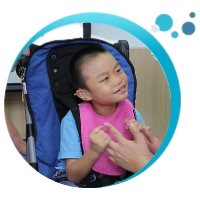
Ee Han
When little Ee Han was 3 months old, his parents noticed that his neck was soft and could not hold his own head. He was then diagnosed with growth development delay and quadriplegic cerebral palsy. His ENT doctor also confirmed that he was suffering from severe hearing loss in both ears.
Since then, little Ee Han has been undergoing multiple therapies and depending on mobility and hearing aids to improve the quality of his life. At an Early Intervention Programme for Infants & Children (EIPIC) class outing, Ee Han’s parents chanced upon another child suffering from a similar condition who had improved tremendously after an infusion of his own cord blood. This encouraged them to let little Ee Han go through a cord blood infusion since they had stored his cord blood with Cordlife at birth.
In November 2014 and September 2015, Ee Han went through two rounds of cord blood infusion performed by Dr Keith Goh, Consultant Neurosurgeon from Mount Elizabeth Hospital. Each round took no more than 45 minutes to complete. After the infusions, both Dr Goh and Ee Han’s parents noted visible improvements including faster sitting up movements and better control of his emotions.
"I noticed that Ee Han’s motor skills has improved and he now has more strength and control of his limbs. He can even walk with support. Ee Han is now more responsive and cognitively aware of things."
said Dr Keith Goh.
Kamsiyochukwu Bryan Peter Ezenwa, Sickle Cell Anaemia
At the age of 2, Kamsiyochukwu was diagnosed with Sickle Cell Anaemia, a dreadful inherited blood disorder which affects the haemoglobin. Subject to multiple transfusions as part of the conventional treatment led to several complications which further deteriorated his health. Seeing their child’s critical condition, his parents were searching for a permanent cure to this pain and suffering. When they learnt that Cord Blood transfusion could help their child to get rid of this suffering, they planned for another baby in India and on the suggestion of their doctor, stored their 2nd child’s cord blood.
On 21st January, 2020, 8yr old Kamsiyochukwu underwent the transplantation at Apollo Hospital, India with his sibling’s Cord Blood Stem Cells. Before the transplantation, he underwent Chemotherapy to prepare his body for the cord blood transfusion. There were no adverse effects observed throughout the process and the transplant was declared successful. And since the transplant, Kamsiyochukwu has been okay and is leading painless life, back at their native - Nigeria.
Kamsiyochukwu’s mother, Blessing Ezenwa applauded Cordlife for not only safekeeping and timely delivery of the Cord Blood sample to the transplant centre at the time of need, but also for the financial insurance provided by Cordlife at the time of transplant.
Ever since the transplant, little Kamsiyochukwu has been thankful to Cordlife for the new lease of life he received from his sibling’s cord blood.
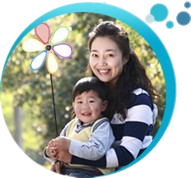
Justin
Justin (alias) was diagnosed with a common childhood cancer, neuroblastoma, at a tender age of one and half years old. Over the course of 1 year, the child had to endure numerous rounds of high-dose chemotherapy to treat his condition. Chemotherapy destroyed cancer cells, but at the same time also killed normal cells. Fortunately, Justin’s parents had his cord blood stored at birth with Cordlife. The cord blood stem cells were infused back to his body after a course of chemotherapy in January 2011 at Queen Mary Hospital and he was discharged from hospital after 3 months. The cord blood unit used had been cryopreserved in our Hong Kong facility for 29 months. Cordlife is very proud to achieve this milestone in the cord blood banking industry in Hong Kong.
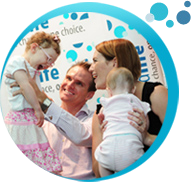
Georgia
An accident at birth 2.5 years ago deprived Baby Georgia of oxygen to her brain, resulting in cerebral palsy. The damage to the toddler's brain caused her to move involuntarily, suffer from muscle spasms and have up to 50 seizures a day. It was only after Cordlife put the family in touch with a renowned neurosurgeon that enable Georgia to be infused with her own cord blood, also stored by Cordlife. Her conditions have improved since then.
"Georgia has made good progress since her stem cell infusion. She has better visual focus and eye contact with adults during play. She has more vocalization and tries to 'sing-a-song' by making different sounds to nursery rhymes. Georgia has improved postural and head control and is observed to be reaching more with her arms," said Ms. Jaclyn Tan, Consultant Occupational Therapist at OzWorks Therapy.Source: The Sun, 3 December 2009
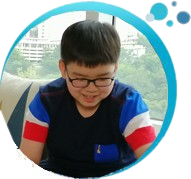
Lucas - Chronic Myeloid Leukaemia
Lucas (alias), a young boy was active and normal until he turned 10 years old and he was constantly lethargic and had a poor appetite for no reason. He also had significant weight loss with bouts of fever and vomiting and had to go through months of seeking treatments in numerous hospitals in Malaysia. In 2017, he was finally diagnosed by doctors that he had chronic myeloid leukaemia. Thankfully, Lucas’s parents managed to find a match in his younger brother’s cord blood, which they had stored at birth with Stemlife (A subsidiary of Cordlife Group Limited). The transplant took place successfully in 2018 and he is in remission currently.



